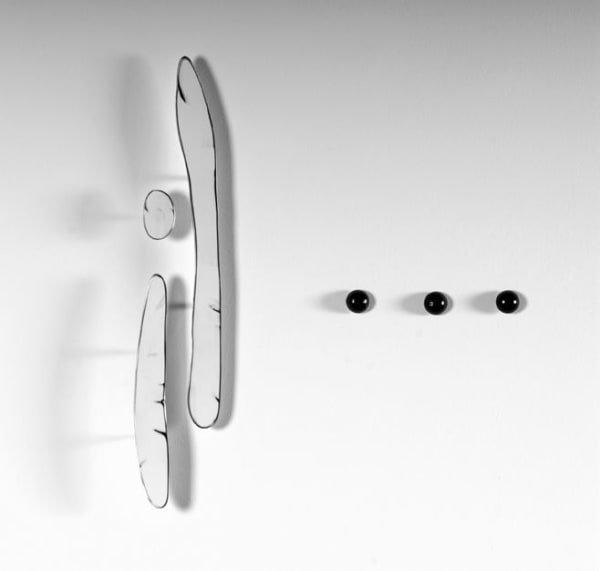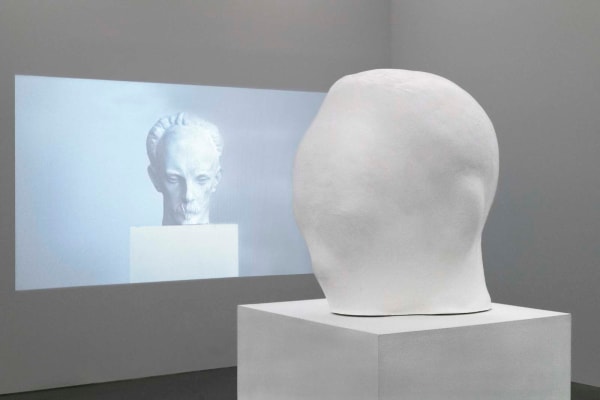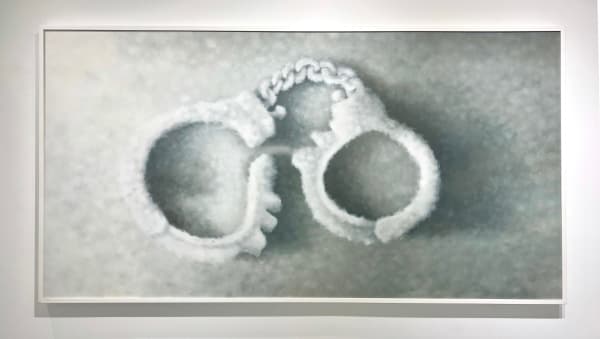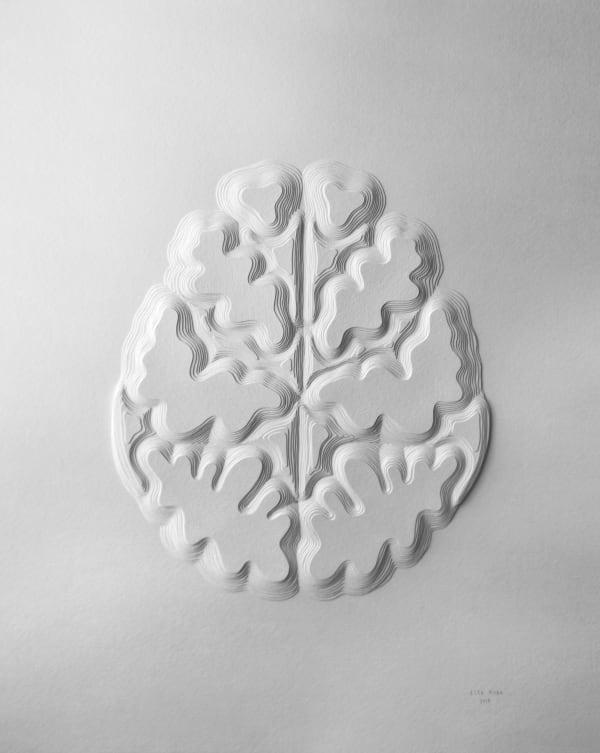-
ABOUT WHITE LAYERS
By Ross Karlan and Claudia Taboada
This exhibition pulls its inspiration from the short story “Las capas” by Eloy Costa, a young Cuban writer and winner of the Onelio Jorge Cardoso Latin American Short Story Award. The main character has an obsession with hiding the color of the wall causing layers of paint to consume the interior space to the point of being trapped, as the author says, “trapped, amongst the bright light, within the white bulk.”
Layers, understood as a material and also as a procedure or action, have had specific functions at certain moments in the history of art. Paleolithic artists drew visual narratives on top of existing ones in caves and created so-called palimpsests of graphic information about daily life or events.
In the Middle Ages, manuscript scribes wrote and overwrote on parchments, even putting their own hand on ancient manuscripts before them. Renaissance painting and subsequent art historical periods painted several scenes on the same support, overlapping them and adding to the complexity of the materials. In fashion, the number of layers in dress often defined the social classes. The examples are numerous and endless throughout history.
Costa’s story goes way beyond the historical ideas of superimposition and layering, bringing them to an extreme. It is no longer just about an aesthetic or technical layering, but an emotional extreme, blurring the line between beauty and pain. In literature, “layering” suggests an author’s weaving of different elements to a story, often stemming from one element like a character, setting, or dialogue. This exhibition does something similar, pulling from Costa’s ideas as a foundation, and layering on top of that foundation to explore a visual narrative.
The artists—Pavel Acosta, Ariamna Contino, Raúl Díaz, León Ferrari, José Manuel Fors, Reynier Leyva Novo, Elsa Mora, Ronald Morán, Carolina Sardi and José A. Toirac—explore different aspects reflected in Costa’s writing — the configuration of impossible spaces, and the exploration of shades of white — in paperwork, passe-partout, paintings, and mixed media.
Ronald Moran’s oil on linen Esposas (Handcuffs) stands front and center in the gallery space, encompassing both visual and emotional elements of Costa’s story—handcuffs expressing a sense of feeling trapped while surrounded in an almost plush-like, larger-than-life, whitewashed environment. On a slightly more literal level, works like Ariamna Contino’s Cupula de la Mezquita Azul de Estambul are made of layers of cut-out paper stacked to create an intricate and exquisite pattern, while José Manuel Fors’ Palimpsesto (Palimpsest) precisely lives up to its name. Finally, José Toirac’s Colt 38 yacente (Homage to Martí) is a marble sculpture that recreates the Cuban national hero, José Martí’s Colt pistol and six intact bullets, the items found with Martí when he died, and the only weapon he carried at the time. Toirac’s work is shown along with a presentation of Reynier Leyva Novo’s What it is, what it has been, which is currently on view at The Museum of Contemporary Art North Miami. -
-
LAS CAPAS / THE LAYERS
By Eloy Costa
He had been hired to paint the walls white. It was a huge house, with stairs and several rooms.
The man began his task with the patience of a sponge. Layer after layer, he covered the old green color, burying it like a fossil in a cave.
By the sixth coat of white paint there was no evidence that the house had ever been any other color. It looked spotless, so white that some walls illuminated others. The white reflected into more white. Like having been admitted to eternal heaven.
However, the man continued painting everything, layer after layer. And so, the process became a notable event. The once huge house began to look small with so many layers of white paint. It had grown from the inside.
The old bookshelf no longer fit into the niche where it once had its place.
The spiders could no longer weave in the curved, white corners of the house.
The furniture from before could never return to its place.
Years later, the interior of the enormous house was no larger than that of a small Turkish konak, carved into the stone of some mountain.
The man continued painting the house white, one layer of paint after another, until he could no longer get out, and he was trapped, amongst the bright light, within the white mass.
-
-
-
-
White Layers: Curated by Claudia Taboada and Inspired by Eloy Costa's short story "Las Capas"
Past viewing_room












